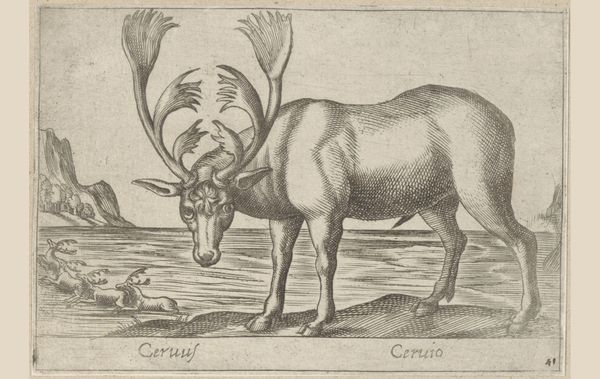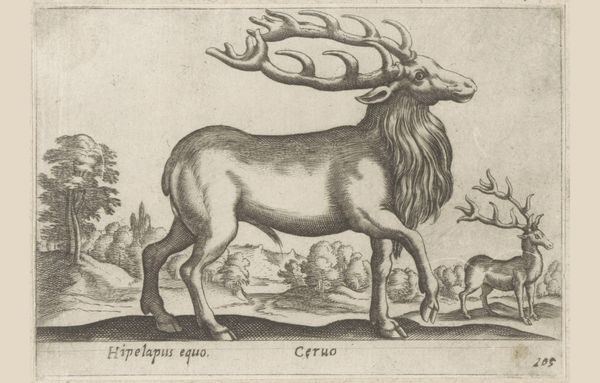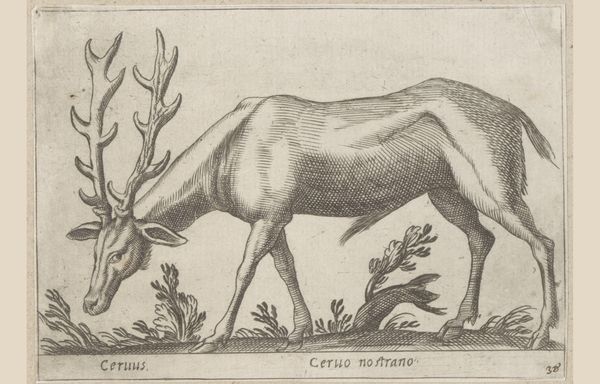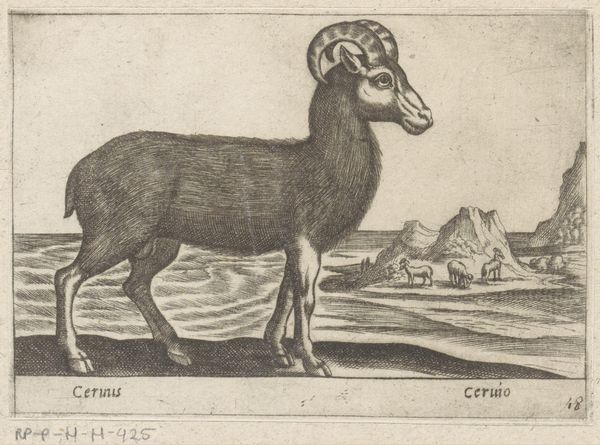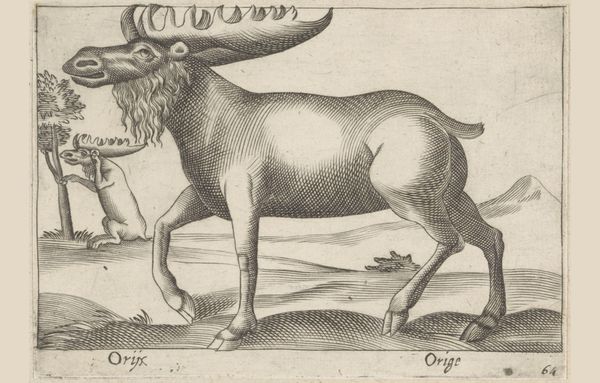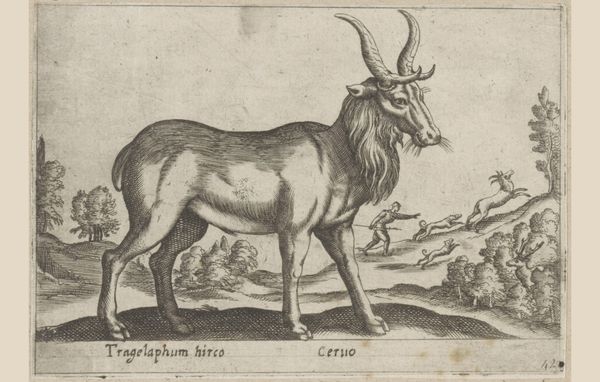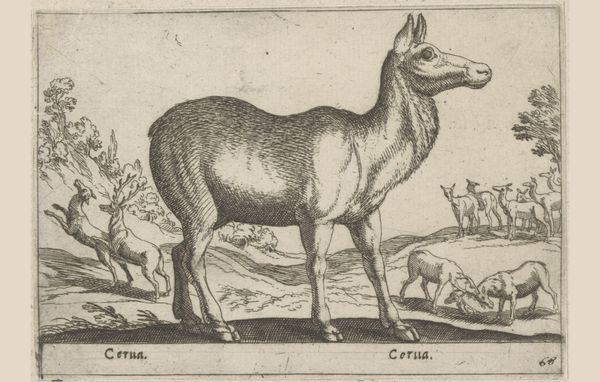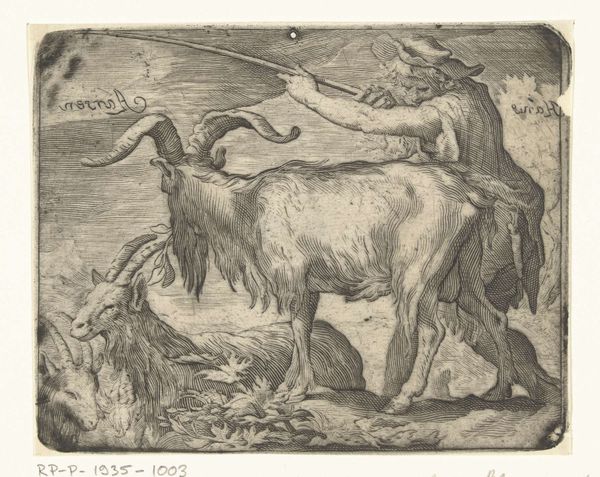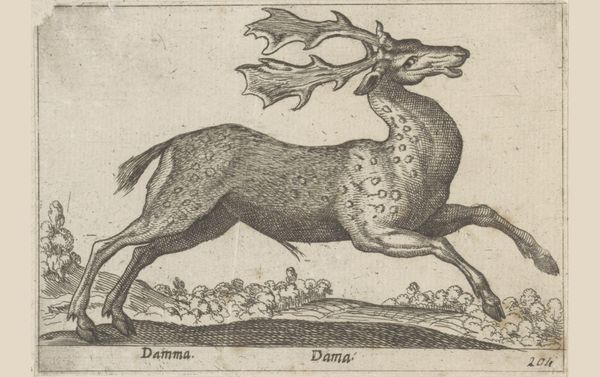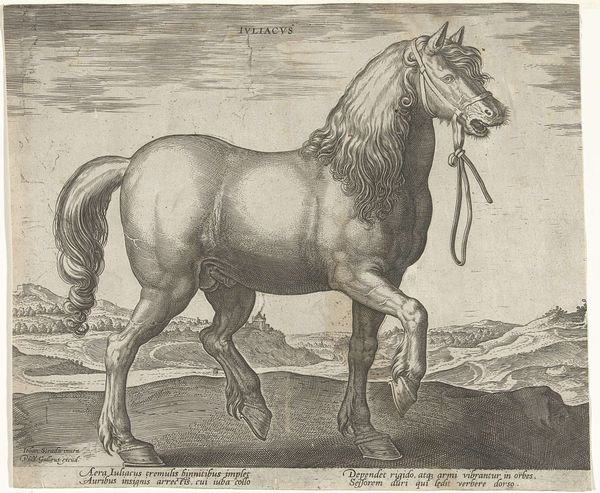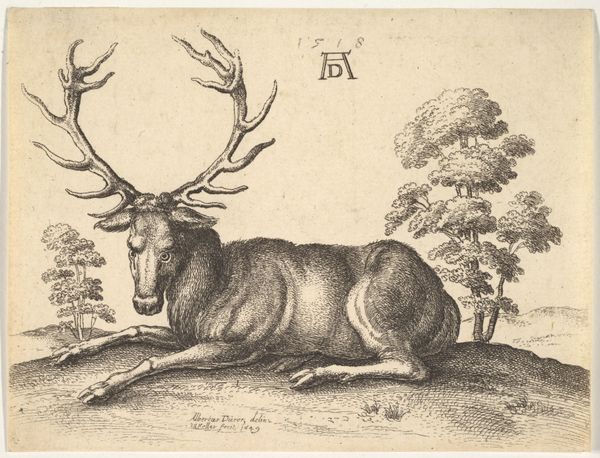
print, engraving
#
animal
# print
#
landscape
#
form
#
11_renaissance
#
line
#
history-painting
#
engraving
#
realism
Dimensions: height 95 mm, width 137 mm
Copyright: Rijks Museum: Open Domain
Editor: Here we have "Hert" by Antonio Tempesta, created before 1650. It’s an engraving. The animal is wonderfully detailed, like a scientific illustration, yet set against this simple, almost dreamlike landscape. What do you see in it? Curator: Well, I’m immediately struck by the antlers. They are so elaborate, almost ridiculously so! It’s not just about realism, is it? Tempesta is making a statement, exaggerating the animal's form, turning it into a symbol of, dare I say, virility and untamed nature. Do you feel the texture that engraving can bring to the surface? Editor: Definitely. You can almost feel the fur. So it’s less about portraying an actual deer, and more about…ideas around it? Curator: Exactly. Prints like this circulated widely. Consider the cultural context: the Renaissance interest in the natural world, yes, but also in taming and cataloging it. It’s a bit of a power play, wouldn't you agree? But this print… It also feels celebratory, wouldn't you agree? As if Tempesta is revelling in the sheer extravagance of nature's design, imperfections and all? I feel this is more a form of cultural exhibition. Editor: So it’s a controlled observation and documentation with this almost ecstatic tone? I never thought about it that way before! Curator: Sometimes, the artist’s excitement comes to light through the creation itself and is reflected upon the surface with intention. Look closer at those lines; that crosshatching, isn't that delightful! And here, just here, there appears to be more definition with texture rather than precise form. Don't you find that to be an honest moment? Editor: I do! It brings it all together, what a wonderful piece. Curator: Yes, sometimes, art surprises you at first glance and more so upon closer inspection.
Comments
No comments
Be the first to comment and join the conversation on the ultimate creative platform.
